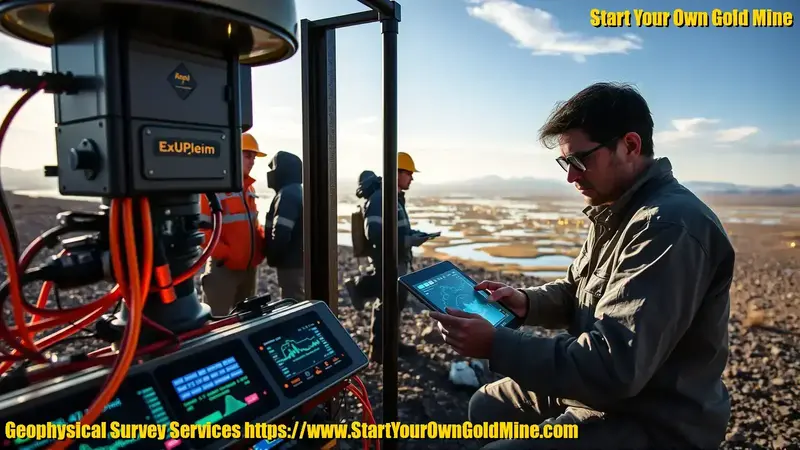Unlocking Hidden Riches: The Role of Geophysical Exploration in Gold Mining
Geophysical exploration has revolutionized the search for gold by allowing mining companies to non-invasively probe the Earth’s subsurface and identify potential deposits with greater accuracy and efficiency. By utilizing a range of techniques such as magnetic, electromagnetic, induced polarization, resistivity, and seismic surveys, experts can detect anomalies and variations in physical properties that may indicate the presence of gold and its associated minerals. This cutting-edge approach not only accelerates the discovery process but also helps in minimizing environmental impact by reducing the need for exploratory drilling and minimizing the area that needs to be disturbed. As the quest for precious metals continues, geophysical methods stand as a cornerstone in the responsible and effective exploitation of gold resources worldwide.
In the context of gold mining, geophysical exploration is a critical first step in the process of locating and assessing gold deposits. Geophysical methods are used to detect the presence of gold and other minerals by measuring the physical properties of the Earth’s subsurface. These methods can significantly reduce the cost and time required to find viable mining targets compared to traditional exploration methods. Here are some of the key geophysical techniques applied in gold mining exploration:
Magnetic Surveys: Gold itself is not magnetic, but it can be associated with magnetic minerals like magnetite. Magnetic surveys can detect anomalies in the Earth’s magnetic field caused by the presence of magnetic minerals near gold deposits.
Gravimetric Surveys: Variations in the Earth’s gravitational field can indicate differences in density of subsurface materials. Gravimetric surveys can help identify dense ore bodies that might be associated with gold deposits, although this method is less commonly used for gold exploration compared to others.
Electromagnetic Methods: These methods involve transmitting an electromagnetic field into the ground and measuring the response. Different minerals, including those containing gold, have different electrical conductivities. Electromagnetic techniques can help identify the presence of conductive minerals that may be associated with gold.
Induced Polarization (IP): This technique measures the ability of the subsurface to temporarily hold an induced electrical charge. It is particularly useful in detecting sulfide minerals, which are often associated with gold. Gold deposits can be linked to sulfide mineralization, and IP surveys can help distinguish between different types of mineralized zones.
Seismic Surveys: While seismic surveys are not directly used for gold exploration, they can help map the geological structures and formations that may contain gold deposits. Seismic data can also be used in conjunction with other geophysical methods to improve the accuracy of the exploration results.
Resistivity Surveys: Resistivity methods measure the resistance of subsurface materials to the flow of an electrical current. Gold deposits can affect the electrical properties of surrounding rocks, so resistivity surveys can help identify zones of high or low conductivity that might indicate the presence of gold.
Ground Penetrating Radar (GPR): GPR uses radar pulses to image the subsurface and can detect changes in material properties and structures. It can help identify geological features that may be associated with gold deposits, such as faults, fractures, and alteration zones.
Once a potential gold deposit is identified through geophysical surveys, further exploration methods, such as drilling and sampling, are used to confirm the presence of gold and to estimate the quantity and quality of the deposit before any mining operations begin. It’s important to note that geophysical exploration is an indirect method of detecting gold, and it must be combined with geological and geochemical studies for accurate interpretation and validation. Mining companies also need to ensure that their exploration practices are environmentally responsible and comply with regulations to minimize the impact on the surrounding ecosystem.

